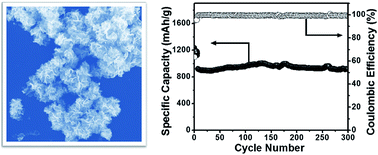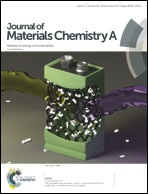Engineering SnS2 nanosheet assemblies for enhanced electrochemical lithium and sodium ion storage†
Abstract
The reversible electrochemical storage of Li+ and Na+ ions is the operating basis of secondary lithium-ion and sodium-ion batteries. In recent years, there has been rapid growth in the search for appropriate electrode materials. Nevertheless, the development of host materials for active and durable electrochemical storage of both Li+ and Na+ ions remain challenging. In this study, we report a facile solvothermal method to prepare hierarchical assemblies of thin SnS2 nanosheets in N-methyl-2-pyrrolidone. The as-prepared product has an expanded layered structure due to the presence of organic intercalates. Mild annealing restores the normal 2H-SnS2 phase with the hierarchical architecture preserved. When annealed SnS2 was evaluated as the anode material of lithium-ion batteries, it exhibited large capacity in excess of 1200 mA h g−1 and decent short-term cycling stability. It was further coated with a thin carbon layer as the physical and electrical reinforcement, which led to a much improved cycle life at both low and high current rates. Moreover, carbon coated SnS2 also demonstrated a large capacity (∼600 mA h g−1) and decent cycling stability as the anode material of sodium-ion batteries.



 Please wait while we load your content...
Please wait while we load your content...